
The Korean War was fought between North Korea and South Korea from 1950 to 1953. The war began on 25 June 1950 when North Korea invaded South Korea. The war ceased with an armistice on 27 July 1953. North Korea was supported by China and the Soviet Union while South Korea was supported by the United States and the United Nations (UN).
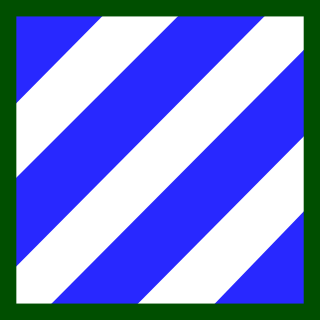
The 3rd Infantry Division (3ID) is a combined arms division of the United States Army based at Fort Stewart, Georgia. It is a subordinate unit of the XVIII Airborne Corps under U.S. Army Forces Command. Its current organization includes a division headquarters and headquarters battalion, two armored brigade combat teams, one aviation brigade, a division artillery, a sustainment brigade and a combat sustainment support battalion along with a maneuver enhancement brigade. The division has a distinguished history, having seen active service in World War I, World War II, the Korean War, and the Global War on Terror. The Medal of Honor has been awarded to 61 members of the 3rd Infantry Division, making the division the most honored in the Army.

V Corps, formerly known as the Fifth Corps, is a regular corps of the United States Army headquartered at Fort Knox, Kentucky and Camp Kościuszko, Poland.

The 1st Commonwealth Division was the military unit that commanded Commonwealth land forces in the Korean War. The division was a part of the multinational British Commonwealth Forces Korea, with infantry units of the British Army, Canadian Army and Australian Army forming the bulk of the division. Additionally, the New Zealand Army supplied artillery contingents and an Indian medical unit was also attached. As with the "Korean Augmentation To the United States Army" (KATUSA) programme, numerous South Korean troops were seconded to the Commonwealth division to make up numbers under a scheme known as "KATCOM".
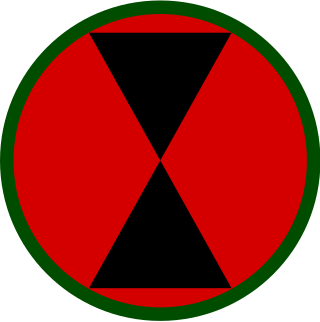
The 7th Infantry Division is an active duty infantry division of the United States Army based at Joint Base Lewis-McChord charged with sustaining the combat readiness of two Stryker brigade combat teams (BCT), a combat aviation brigade, and a Division Artillery Unit, as well as participating in several yearly partnered exercises and operations in support of U.S. Army Pacific and the Indo-Pacific region. The 7th Infantry Division is the only active-duty multi-component division headquarters in the Army. The 7th Infantry Division is also home to two of the Army's newest enabling battlefield capabilities, the Multi Domain Task Force and the Intelligence, Information, Cyber, Electronic Warfare and Space Capabilities, or I2CEWS battalion.
A Military Assistance Advisory Group (MAAG) is a designation for a group of United States military advisors sent to other countries to assist in the training of conventional armed forces and facilitate military aid. Although numerous MAAGs operated around the world throughout the 1940s–1970s, including in Yugoslavia after 1951, the most famous MAAGs were those active in Southeast Asia before and during the Vietnam War.

The 25th Infantry Division is a United States Army division based at Schofield Barracks in Hawaii. The division, which was activated on 1 October 1941 in Hawaii, conducts military operations primarily in the Asia-Pacific region. Its present deployment is composed of light infantry and aviation units. Tropic Lightning soldiers regularly train with other U.S. military branches to practice and maintain joint operations capabilities. The climate and terrain of the Pacific region demands Tropic Lightning soldiers be able to operate in physically demanding and harsh environments. In 2014, the division opened the Jungle Operations Training Center—the first such school in the Army since the closing of the old Jungle Warfare School at Fort Sherman, Panama Canal Zone. Joint operations and training with partner states herald a new chapter in the history of Tropic Lightning—America's Pacific Division.
The Korean Service Medal (KSM) is a military award for service in the United States Armed Forces and was established November 8, 1950, by executive order of President Harry Truman. The Korean Service Medal is the primary US military award for service or participation in operations in the Korean area during the Korean War between June 27, 1950, and July 27, 1954.
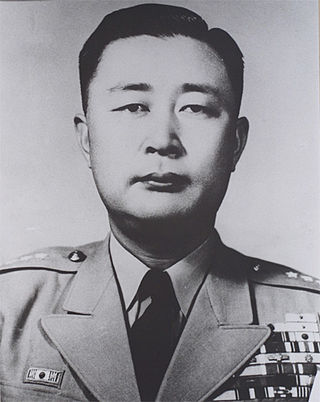
Paik Sun-yup was a South Korean military officer. Paik is best known for his service during the Korean War, for being the first four-star general in the history of the South Korean military, and for his service as a diplomat and statesman for South Korea.
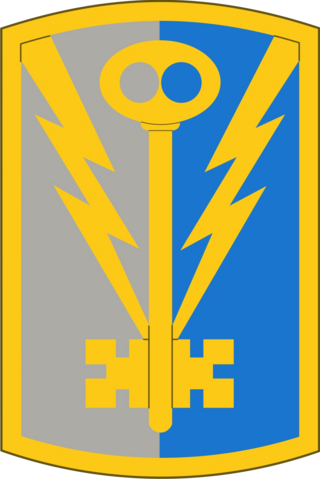
The 501st Military Intelligence Brigade is a United States Army unit, assigned to the United States Army Intelligence and Security Command (INSCOM) under the operational control of United States Forces Korea (USFK) located in South Korea. The 501st MI Brigade conducts theater level multi-discipline intelligence collection and analysis, aerial Intelligence Surveillance & Reconnaissance (ISR), and security operations in support of Eighth United States Army, U.S. Army Pacific, U.S. Pacific Command, U.S. Forces Korea, and other national level agencies.
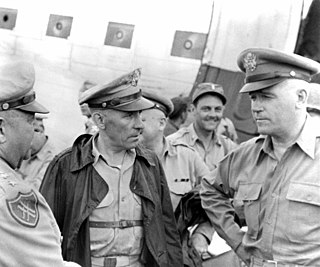
Major General John Huston Church was a senior officer in the United States Army. He fought in World War I, World War II and in the Korean War. During the latter conflict, he provided assistance to the South Korean Army in the opening days of the war. He later commanded the 24th Infantry Division while it was engaged in the Battle of the Pusan Perimeter.

Major General Laurence B. "Dutch" Keiser was an American officer who served in both World War I and World War II. During the early stages of the Korean War, he commanded the 2nd Infantry Division.

Arthur Seymour Champeny was a United States Army officer, reaching the rank of Brigadier General. He is the only American to earn the Distinguished Service Cross in three different wars. In addition to his three Distinguished Service Crosses, he was awarded the Silver Star, two Legions of Merit, five Purple Hearts, two French Croix de Guerre, the French Legion of Honor, and the Italian Bronze Medal of Military Valor.

Lieutenant General Samuel Tankersley Williams was a senior United States Army officer. Williams became prominent in army history for being reduced in rank from brigadier general to colonel, and then resuscitating his career to again advance to general officer rank. He also commanded the 25th Infantry Division during the Korean War and served as commander of Military Assistance and Advisory Group – Vietnam, the predecessor to Military Assistance Command – Vietnam.

Francis William Farrell was a lieutenant general in the United States Army. He successively commanded the 82nd Airborne Division, V Corps and Seventh United States Army.
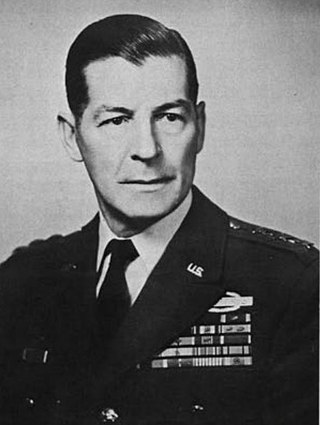
Gordon Byrom Rogers was a United States Army lieutenant general who served in several command positions during World War II and the Korean War, including the United States Military Advisory Group to the Republic of Korea and the 3rd Armored Division.

Cornelius Edward Ryan CBE was a highly decorated officer in the United States Army with the rank of major general. During his 40 years of active service, he participated in both World Wars and Korean War and held several important assignments including commands of 101st Airborne Division, Berlin Occupation Sector or as Chief of Korean Military Advisory Group.

Halley Grey Maddox was a career officer in the United States Army. A 1920 graduate of the United States Military Academy, he was originally assigned to the Infantry branch and later transferred to Cavalry. A noted horseman, he took part in numerous equestrian shows as a member of U.S. Army teams and was also a member of numerous Army polo teams during the height of the sport's popularity in the 1920s.

Lee Hyung-geun was a South Korean military officer and diplomat. A four-star general in the Republic of Korea Army, he later served as an ROK foreign ambassador.
The Korea Liaison Office (KLO) was an American military intelligence unit composed primarily of South Koreans. It operated between June 1, 1949 and July 1951.



















